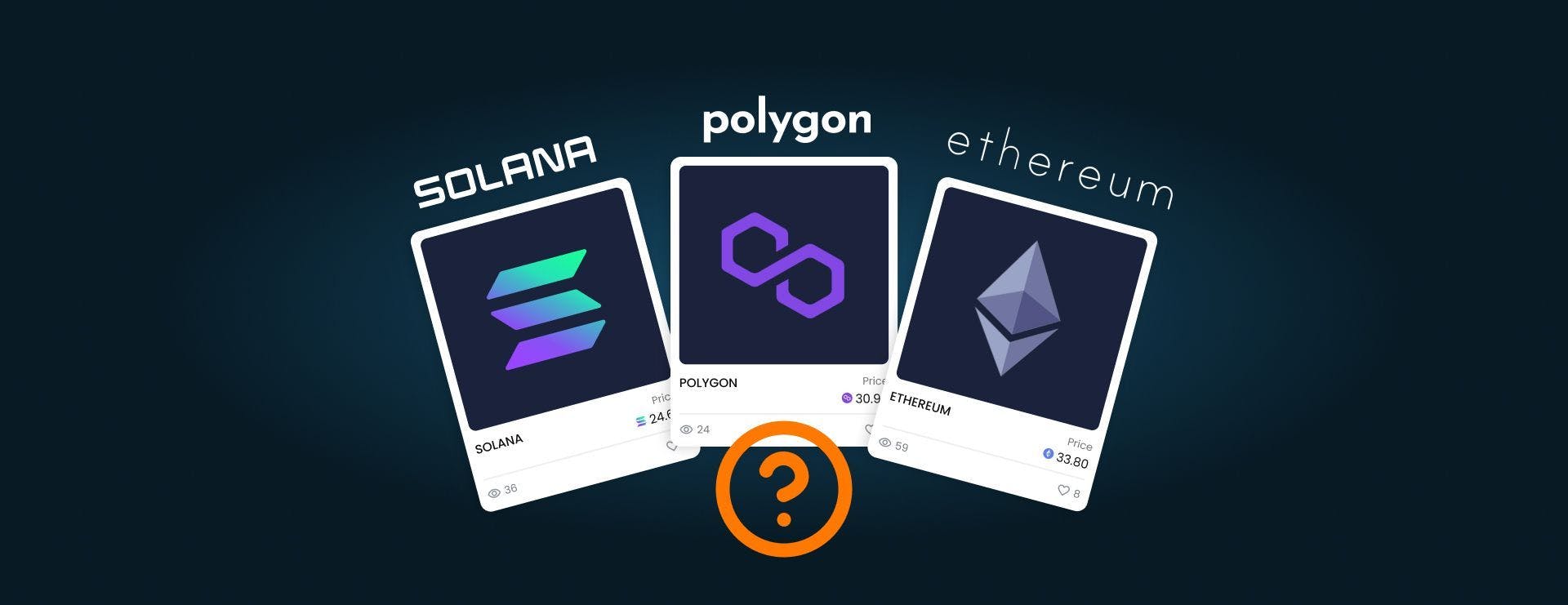Did you know that the Bitcoin network uses more energy than Bangladesh and Switzerland combined? Yes, it does. And while this is just a one-sided story (most of Bitcoin’s energy comes from clean energy), it will keep the question of what could be done to reduce the energy usage of the protocol alive.
Just a quick one: are there other less energy-intensive blockchains out there? And how have blockchain technology and clean energy fared in recent years? Let's discuss.
Blockchain Technology in the Energy Sector
The relationship between blockchain and energy is mutually inclusive. For example, blockchains require energy for mining blocks, and it has, in turn, revolutionized the way energy is distributed and managed.
The energy industry has also paid close attention to blockchain technology, which has already aided in the development of the idea known as the Internet of Energy (IoE).
Energy trading platforms and other transparent, decentralized energy prosumer networks are made possible by the Internet of Energy concept. Successful blockchain implementations in the energy markets include new approaches to electric e-mobility, energy democratization, P2P energy trading platforms, demand-response mechanisms, smart meters, smart grid management, automation of green certificate issuance, and carbon trading.
These innovations have facilitated the energy transition and circular economy initiatives. In addition, Blackrock, world's largest asset management firm, recently announced that it is looking to create a private Bitcoin trust which will offer its institutional investors the option to dip their toes in crypto. Additionally, they have partnered up with Energy Web Token in order to attract buyers that are more inclined towards investing in green deals on the blockchain, spiking interests in the subject once more.
How Blockchain Uses Energy
Enough of how blockchain improves the energy sector - let’s look at how blockchain technology leverages the energy markets for its own growth.
Blockchain is simply a chain of blocks. Every blockchain uses a consensus mechanism to get everyone in the network to agree on the block's authenticity. There are different consensus mechanisms in use, but the most commonly used is Proof-of-Work (PoW).
With this consensus mechanism, people earn the right to do computational work to validate the next block. These people are miners and are rewarded with some mined cryptocurrency and a part of the fees.
The competition for who will get the closest answer to the computational problem has made the need for a lump sum investment of computational power, and therefore energy, a priority.
Does Bitcoin use Renewable energy?
As an example, the current annual electricity consumption of the Bitcoin blockchain is 204,5 TWh, about the same as Thailand's. The media has portrayed this as a negative, while the energy's primary source - renewable resources - has received little attention. While Bitcoin is not the only blockchain operating with a PoW consensus mechanism, it is the most popular by volume and usage. This has made it the point of reference for blockchain power usage.
So what if we could mine Bitcoin with alternative green energy sources, such that we can use clean energy sources to reduce Bitcoin’s carbon emissions in our world?
Many Bitcoin enthusiasts claim that this is already in use, but the percentage of Bitcoin users on renewable energy sources is arguable due to the miners' anonymity.
The percentage of clean energy usage in mining Bitcoin stands at 40% to 75%, but experts still believe the opportunity forgone in mining Bitcoin with renewable energy certificates is not worth it.
Several other approaches that have been tested to reduce electricity usage have either been sparse or yielded unpredictable results. Methods like Hydroelectric power, solar panels, harnessing excess energy from natural gas, and switching to other consensus mechanisms fall into one of these.
Challenges of Energy Efficiency in Blockchain
The first blockchain wasn't made to handle this many users and transactions; instead, it was designed to support a virtual currency like Bitcoin. The PoW consensus mechanism that powers the Bitcoin network utilizes a substantial amount of energy, and this is a result of its wide popularity and adoption.
According to a new estimate, the amount of electricity required to run the entire Bitcoin network is more significant than what more than 159 different countries consume.
This situation is also relevant for digital currencies like Ethereum using the PoW consensus mechanism. Currently, one ETH transaction consumes 48,14 kWh or almost 1.5 days' worth of an average American household's energy use. Many stakeholders are hesitant to use this technology because it poses environmental concerns.
This has adverse environmental effects in addition to slowing down the adoption of cryptocurrencies in the real world.
Ethereum and Proof-of-Stake
However, since the new Ethereum Proof-of-Stake does not necessitate calculating incredibly challenging equations, the energy costs for verifying transactions are drastically decreased.
The hardware requirements for PoS are much lower than those for PoW, so secure transactions will consume less energy in the future. For example, according to some projection models, Ethereum 2.0's PoS model will use 99% less energy than PoW models.
Blockchain Use Cases In Renewable Energy
Various blockchain use cases for renewable energy are possible because Blockchain's distinct components, like nodes, intelligent contracts, and tokens, can be used in multiple ways to address specific use case challenges.
Microgrids
Blockchain in the new energy paradigm allows for microgrids controlled by small to medium firms by establishing a peer-to-peer network.
The development of microgrids effectively eliminates dependence on a centralized authority and decentralizes energy production. The microgrids can provide the region's electricity needs even if the main grid goes down. If any microgrid fails, the main grid will be able to supply energy to the area it supports.
To manage demand and supply reasonably, connecting the microgrids with the main grids will be the most crucial application of blockchain in the energy market.
A smart contract can be activated to deliver more energy to a microgrid from another microgrid with an extra supply if one microgrid runs out of energy due to high demand. When the first microgrid stabilizes after such an event, the same smart contract also provides that supply back.
Blockchain-based smart contracts can be implemented to minimize human involvement and have certain conditions automatically executed.
Smart Meters
A smart meter is a tool for calculating energy tariffs and monitoring energy consumption. These smart contracts in a blockchain ecosystem give data directly to the blockchain ledger and not to any other parties. As a result, it is no longer possible for data to be altered by a third party.
Additionally, smart contracts can be used to operate these smart meters. To automatically calculate energy rates and enable charge transparency, smart contracts can be created. These smart contracts can likewise control the energy consumption of certain households.
Carbon Credit Tokenization
This reflects the permitted greenhouse gases that businesses are authorized to emit and is equal to one metric ton of carbon dioxide. When determining how much damage a firm can cause to the atmosphere, carbon permits are employed.
The blockchain-based tokenization of carbon credits aids in the commercialization of illiquid credits to inspire individuals. Additionally, they will be needed as industry usage becomes public.
Businesses can purchase these credits from individuals as tokens. To sell these credits to the industries, these people will reduce their allotted carbon footprint usage.
Consensus Mechanisms That Conserve Energy
They is an effective and simple variant of Proof of Stake that operates in an open and permissioned network. It operates on a consensus mechanism that relies heavily on stakes related to identity.lternative consensus mechanisms, such as Proof of Stake or Proof of Authority.
They are effective variants that operate in an open network that relies heavily on stakes, rather than computational power.
Role of Proof of Stake/Authority in the Energy Sector?
There are several benefits to utilizing proof of stake or proof of authority, namely:
Time Consumption
Let's take proof of authority as an example. Once a node has been confirmed by the Power of Authority consensus to be authentic, it remains accordingly for the duration of its membership in the system. In this manner, the PoA consensus avoids wasting valuable power used to re-verify the nodes. Proof of Authority is a significant asset in the energy market because of energy conservation in transactions.
Cutting Back on Power Use
The utilization of power is the primary obstacle that energy blockchains must overcome. Due to the significant energy and electricity wasted from using Proof of Work as their basic protocol, Ethereum and Bitcoin have come under intense fire and criticism.
In terms of energy usage, a single Bitcoin transaction uses almost 330 houses' worth of electricity in an hour. The power usage will be much reduced if Proof of Authority Consensus is used instead of Proof of Work Consensus in these transactions.
Stronger Networks are Created
As transactions and blocks in PoA networks are verified by authorized validators, it is guaranteed that a robot block of a network is established, increasing the number of robot networks created. People are given incentives to keep their new positions as validators after they become one.
Similar outcomes can be obtained by applying the PoA to the energy market since the service provider or utility can be rewarded by regulating the costs associated with the provided services.
Advantages of Blockchain in Renewable Energy
There are several advantages to utilizing blockchain technology in the renewable energy sector, namely:
Cost Saving
The energy industry frequently relies on intricate supply chains and networks with many participants. For instance, there are several steps involved in the production and distribution of oil, including exploration, extraction, refining, transportation, and marketing.
By organizing the various parties involved in such tasks, blockchain technology may provide frictionless communication, accelerate workflows, and eliminate inefficiencies throughout the supply chain. For an organization, these efficiencies can result in significant cost savings.
Digitalization
The ability of blockchain technology to digitize physical goods is another intriguing feature of this technology. Any asset can be converted to digital form and kept as tokens on a blockchain using smart contracts. This might revolutionize the trading of energy commodities and give individuals new opportunities to exchange extra energy, carbon credits, and other items.
Programmability And Decentralised Systems
Due to the decentralized nature of blockchain, peer-to-peer networks supported by the technology can function independently of centralized control. Additionally, smart contracts can be used to regulate interactions between network users programmatically.
This indicates the degree of security that may be attained in such systems, as well as how blockchain might help improve innovation for energy companies.
Furthermore, to enable more effective energy use, smart grids and meters can be adopted more quickly with blockchain technology. The usage of technology can also facilitate direct grid connectivity for end consumers.
Transparency
The capacity of blockchain to increase transparency among a network of various participants is another useful characteristic required in distributed energy resources. The data stored on a given blockchain network's ledger can be easily verified because each member has a copy of the ledger.
Additionally, the immutability of the blockchain ensures that the data previously recorded on the ledger cannot be altered; this can enhance industry-wide regulatory compliance.
All of this is possible without requiring businesses to give up control of their sensitive data. This is crucial in a sector where trade secrets are used frequently.
Conclusion
With the world going greener, it is clear that blockchain and renewable energy will be two symbiotic systems in the coming years. Blockchain will need to fully transition to more sustainable development in the coming years, either through solar panels or another way. The clean energy field might also benefit from using smart contracts to improve its efficiency.



